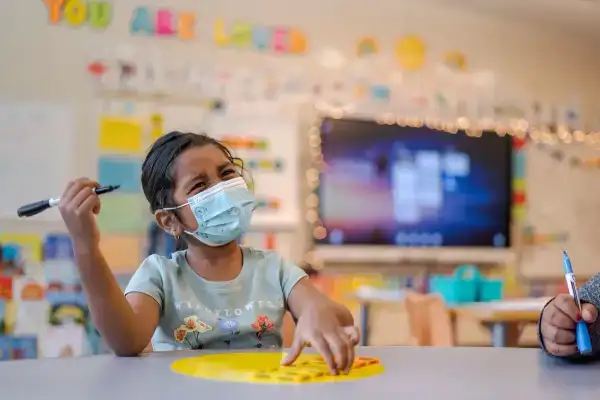education
Districts nationwide are implementing interdisciplinary school mental health teams—bringing counselors, teachers, families, and community partners together—to deliver comprehensive support and improve student well‑being.

As youth mental health crises intensify nationwide, schools are increasingly turning to team‑based approaches that break down silos between educators, mental health professionals, families, and community providers, establishing coordinated systems of support designed to prevent and address emotional and behavioral challenges before they escalate. These interdisciplinary teams, often aligned with frameworks like Multi‑Tiered Systems of Support (MTSS) and the Interconnected Systems Framework (ISF), bring together professionals such as school psychologists, counselors, social workers, nurses, classroom teachers, and community clinicians who collaborate regularly to identify student needs, develop intervention plans, and monitor outcomes . At the core of the model is the recognition that academic difficulties often coincide with mental health concerns, and that schools represent unique access points for early detection and care; research shows that proactive teaming increases a district’s capacity to deliver services, reduces burnout, and improves student behavior and learning outcomes.
Community-based providers, when integrated via ISF into school teams, help bridge gaps between in-school and out-of-school support. They enhance continuity of care by enabling therapeutic services, case management, and family referrals onsite—crucial for students unable to access external mental health care due to barriers like cost, transportation, or distrust . Effective teams are characterized by shared leadership, access to schoolwide data systems, participation in team-training such as Team-Initiated Problem Solving (TIPS) and TeamSTEPPS, and active engagement from school administrators to ensure accountability and resource alignment .
One school in Houston, Milby High, experienced tragic losses during a single year, prompting the formation of a wellness team that included peer support groups, nonprofit partners, and student clubs promoting mental resilience; the resulting community‑based healing initiatives improved engagement and demonstrated the power of collective response . Similarly, in Rigby, Idaho, schools have prioritized human‑centered interventions such as Hope Squads, staffed by trained peers who identify students in distress and connect them with trusted adults—supplemented by volunteer parent groups—highlighting that effective mental health support depends on strong interpersonal ties as much as services . The implementation of tiered supports allows schools to differentiate care: universal practices like social‑emotional learning are provided through tier‑one activities; targeted group interventions or mentoring are offered for students showing early signs of struggle at tier two; and individualized counseling or referral to licensed providers constitutes tier three support—each tier overseen by teams coordinating efforts across domains .
Positive Behavior Interventions and Supports (PBIS), when integrated with mental health teams under ISF, has been shown to expand delivery of Tier 2 and 3 supports significantly, with clinicians participating in most decision‑making meetings and increasing overall intervention access for students who need it most . Beyond behavioral supports, team-based structures enable more proactive interventions. In Norway, schools engaged in dialogue-based development work involving teachers, school leaders, and mental health staff collaboratively improved their practices in promoting student well‑being, sustaining improvements rather than relying on ad hoc efforts .
These collaborative processes foster shared ownership and long-term change, unlike isolated training or one-off programs. Despite its promise, team-based mental health work faces challenges. Many districts struggle with severe understaffing—school psychologists, counselors, and social workers often serve caseloads exceeding professional recommendations, slowing response times and limiting support quality .
Securing dedicated space within schools for confidential therapy or private consultation is logistically difficult, and scheduling interventions amidst academic and extracurricular demands remains a persistent obstacle . Additionally, inconsistent training and turnover undermine team cohesion unless supported by ongoing professional development and leadership engagement. Reviews note that teams without strong facilitation or administrative backing often falter, potentially increasing staff burnout and draining scarce resources without yielding student benefits .
Despite these barriers, many districts are scaling interprofessional models. New Haven Public Schools, for instance, reduced chronic absenteeism significantly through coordinated outreach—including home visits and direct family engagement—that leveraged school-community coordination and focused on underlying social or emotional issues driving absences . Programs like Hope Squad empower students to actively participate in campus well-being, training peer ambassadors to recognize distress and reduce stigma—leading to increased help-seeking behaviors and stronger school climates .
Schools in San Antonio have introduced “peace rooms,” restorative practice spaces that allow students a calming haven during emotional crises or disciplinary incidents, with facilitation guided by teams trained in trauma sensitivity and mental wellness strategies . The cumulative impact of team-based mental health is reflected in metrics showing fewer disciplinary referrals, improved attendance, lower suspension rates, and positive shifts in school climate—especially when evidence-based practices are layered across tiers and coordinated via well-functioning SMH teams . Children benefit not only through direct services but also from cultural shifts toward normalized discussion of feelings, accessible connection to care, and enrollment environments seen as safe and responsive.
Advocates argue that with proper investment in team training, data infrastructure, and cross-sector collaboration, school mental health teaming can expand care without endless demand for scarce specialists. Policy initiatives at the state and federal level—including Medicaid reimbursement expansion and legislative support for school-based health centers—are seen as critical enablers of sustainable team-based models . Ultimately, team-based approaches reflect a paradigm shift: schools are moving from reactive, isolated counseling to integrated, preventive systems where mental health becomes part of the school’s core mission.
By aligning educators, health providers, families, and communities around shared responsibility, these collaborative models offer scalable pathways to meet rising student needs—ensuring that academic instruction and emotional support reinforce rather than compete with one another..
Read More